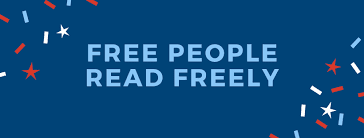9780062202475
Harper, 2014
384 pp
arc - from the publisher, thank you!
"Parallel to the Map of Vichy is a map of decency."
Now here's a book definitely worth every second of time I put into it.
It's also one that stayed with me for some time after finishing it.
In the author's Foreword to this book, she notes that in 1953 an article appeared in Peace News
about a pacifist pastor named André Trocmé in the French parish of Le
Chambon-sur-Lignon who "helped save some 5,000 hunted communists,
Freemasons, resisters and Jews from deportation to the extermination
camps of occupied Poland." According to this piece, Trocmé had instilled his
belief in non-violent, peaceful resistance among his parishioners, and
it was in this spirit that they were led to take in, hide, and sometimes
get people whose names "appeared on Nazi death lists" safely
over the Swiss border. Over two decades later, in 1988, Le Chambon
was designated by Yad Vashem as the only village in the world to be
"Righteous Among Nations," an appellation that in combination with a
number of articles, documentaries, and memoirs about this remote village
in the Massif Central, perpetuated an ongoing "myth" about Trocmé's
role and that of Le Chambon as well.
But there's a problem here: by
focusing solely on this small, remote village and this peace-loving
Protestant pastor, over the years the "myth" surrounding him has ignored a lot of other
people -- those from other places, of other beliefs, and even a number
of humanitarian authorities who literally risked everything to help
save people designated for the death camps of the Holocaust.
If you want to read more about this book (and I really do think it's a fine study), I've posted about it on my nonfiction page. As I noted there, I'm not a huge reader of histories about WWII in Europe, but this book definitely held my interest not just because of the Holocaust, but because of the author's focus on history itself.


Thank you for your thoughtful, interesting review.
ReplyDeleteI am going to read this next.
Elizabeth
You're welcome. I hope you enjoy it as much as I did.
ReplyDeleteThank you for your review of this book, which sounds terrific, although I get so upset about the atrocities that I often can't read about this period.
ReplyDeleteHowever, I agree 100% about so many other people resisting the Nazis in large and small ways in so many countries, partisans in Byelorussian forests and Italian villages, people smuggling children from the Warsaw Ghetto, workers walking out of Dutch factories to protest deporation of the Jews, and then resisters going underground when the Nazis shot at protests. Dutch activists burning down the Amsterdam population center which held Jews' records. I know an artist who never met his Dutch uncle, who was a resister and was caught. French resisters everywhere.
There was actually a resistance committee within the camps. Even in the camps, as told by a woman who survived, the women united to slow down the war production.
And in Ukraine, 150,000 resisters were killed by the Nazis. Even in Germany, the NY Times reported, there had been 800,000 jailed political prisoners; many opposed the Nazis right in their own headquarters.
There is much to say about this topic. It fascinates me, and I'd rather think about the resisters, including in the Warsaw Ghetto Uprising, than think about the horrors.
It's a good book. The historical issues that surfaced afterwards were fascinating to me.
DeleteThank you for taking the time to read and review this book for the tour.
ReplyDeleteA pleasure. It's such a good book!
Delete